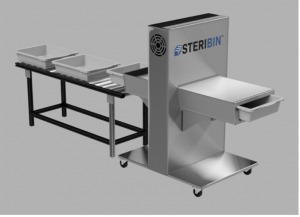XENON supports these efforts with benchtop products designed for research use, as well as with expertise and consulting. We have our own microbiology lab, and we offer OEM support services to help companies bring their products to market.
In this blog, I’d like to highlight some of the R&D opportunities for Pulsed Light in the areas of food, health, and safety, which are so important in today’s world.
One especially “fruitful” field of research is the effect of Pulsed Light on food, which has been approved for many uses by the FDA. A 2019 study of strawberries found that Pulsed Light “could improve…shelf life without significantly affecting the quality and bioactive compounds of strawberries.” The same research team found similar results for blueberries in an earlier study.

Pulsed Light treatment of strawberries can extend shelf life, a critical issue for grocers everywhere.
Are there other foods that could benefit from the use of Pulsed Light? XENON is ready to collaborate with researchers who want to find out.
In addition to basic research, there are exciting opportunities for new product development. The research cited above certainly suggests product possibilities. So does the fact that food processing companies need to decontaminate their conveyors and packaging, and Pulsed Light is the fastest, safest, and most effective way to do it. OEMs can fill a critical market need by developing products for these applications based on XENON Pulsed Light.
R&D is advancing in other areas related to health, too. For example, XENON recently collaborated with Steribin to bring a new product to market: a sterilizing system for the plastic bins used at airport security checkpoints. Since these bins are one of the dirtiest items in an airport, exposed to everyone who passes through, the Steribin solution can make a significant difference in public health and safety, especially with a global pandemic in progress.

The Steribin security bin disinfection system.
Whatever the application, XENON collaborates with OEMs to develop the optimum combination of lamp, energy, and timing for their application. We can provide either the basic components or an assembled unit ready to be incorporated into the OEM’s product. Our in-house microbiology lab conducts proof-of-concept and original research to help customers make sure their product will be effective.
Health and safety are top-of-mind for people around the world, and it’s clear that Pulsed Light has an important role to play in addressing their concerns. If you have a product or research idea you’d like to explore, contact the XENON team here.
